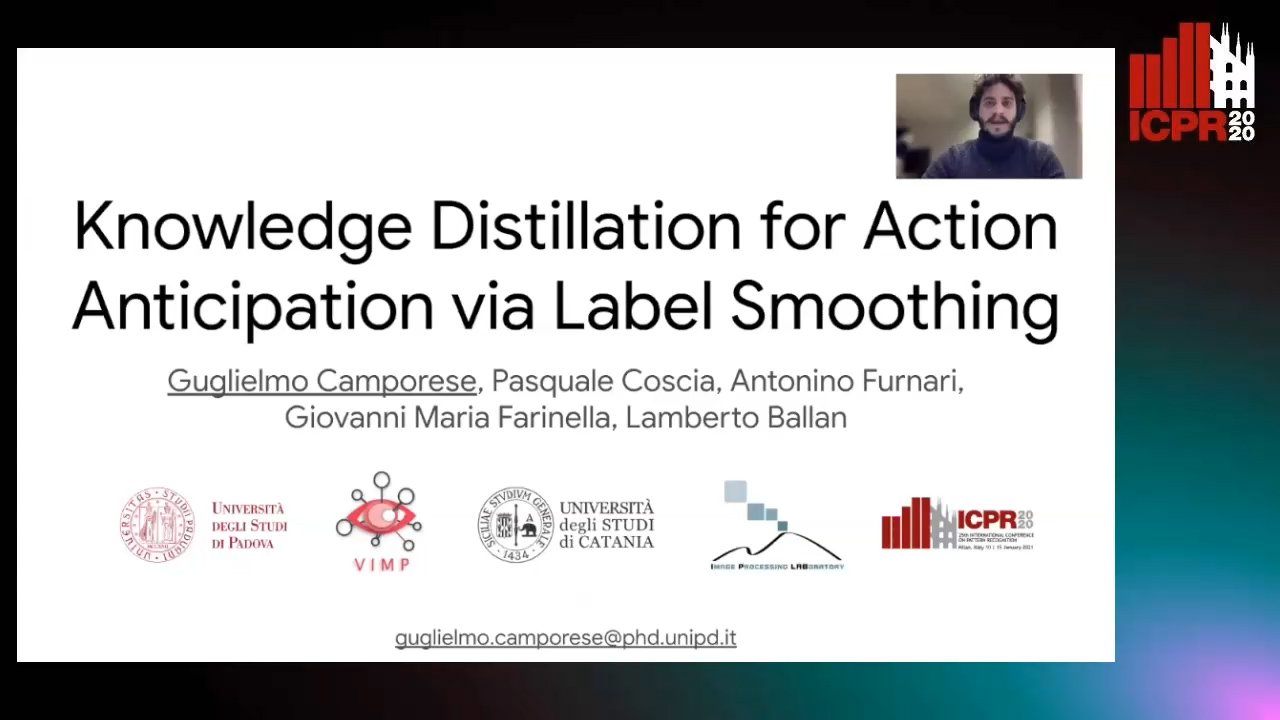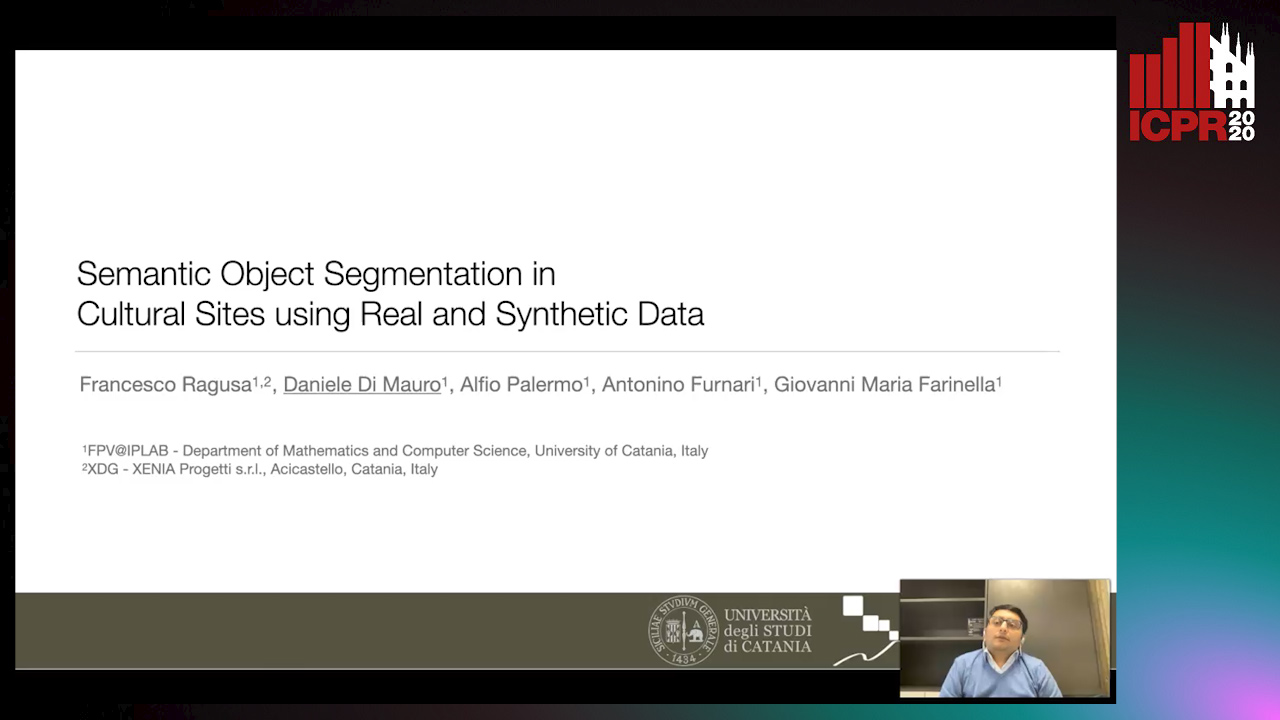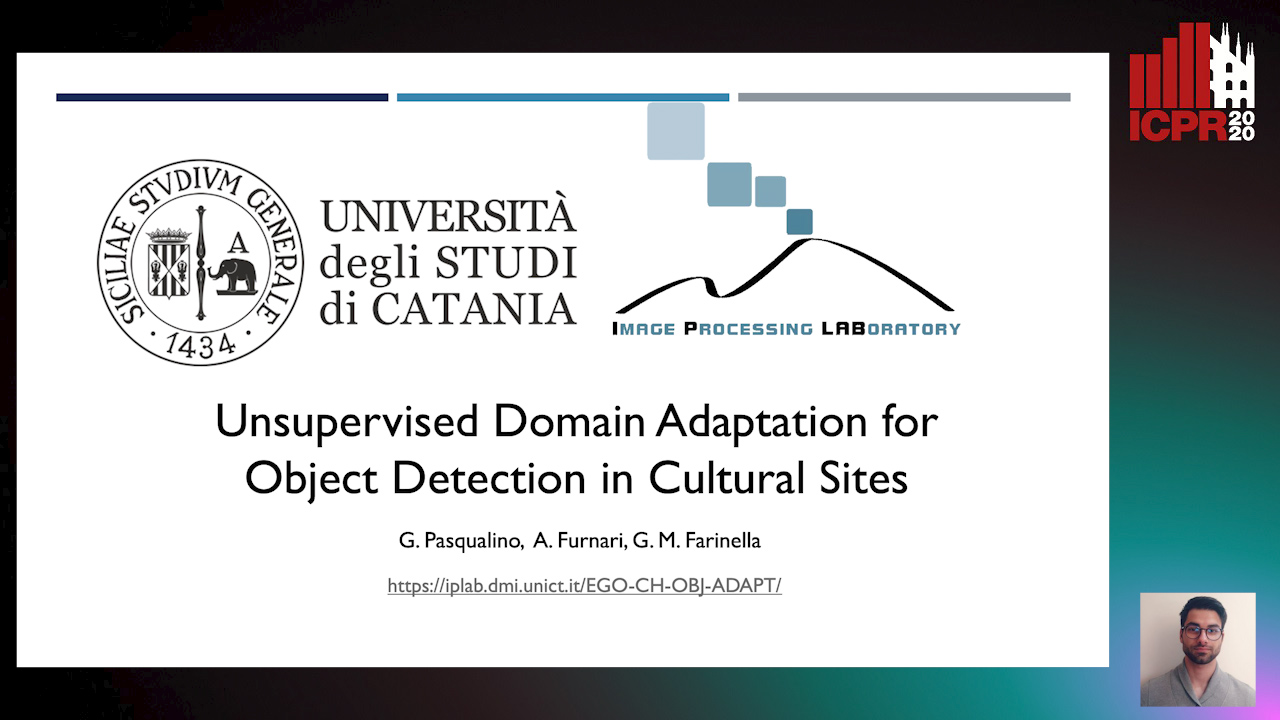Antonino Furnari
Papers from this author
Knowledge Distillation for Action Anticipation Via Label Smoothing
Guglielmo Camporese, Pasquale Coscia, Antonino Furnari, Giovanni Maria Farinella, Lamberto Ballan

Auto-TLDR; A Multi-Modal Framework for Action Anticipation using Long Short-Term Memory Networks
Abstract Slides Poster Similar
On Embodied Visual Navigation in Real Environments through Habitat
Marco Rosano, Antonino Furnari, Luigi Gulino, Giovanni Maria Farinella

Auto-TLDR; Learning Navigation Policies on Real World Observations using Real World Images and Sensor and Actuation Noise
Abstract Slides Poster Similar
Semantic Object Segmentation in Cultural Sites Using Real and Synthetic Data
Francesco Ragusa, Daniele Di Mauro, Alfio Palermo, Antonino Furnari, Giovanni Maria Farinella

Auto-TLDR; Exploiting Synthetic Data for Object Segmentation in Cultural Sites
Abstract Slides Poster Similar
Unsupervised Domain Adaptation for Object Detection in Cultural Sites
Giovanni Pasqualino, Antonino Furnari, Giovanni Maria Farinella

Auto-TLDR; Unsupervised Domain Adaptation for Object Detection in Cultural Sites